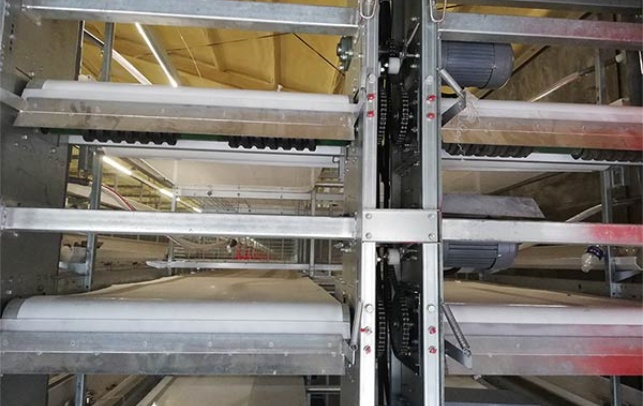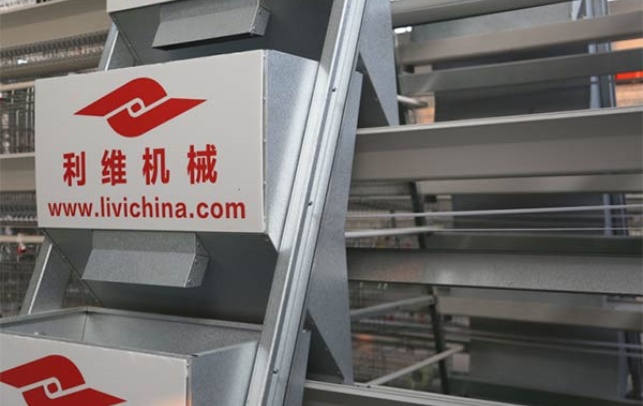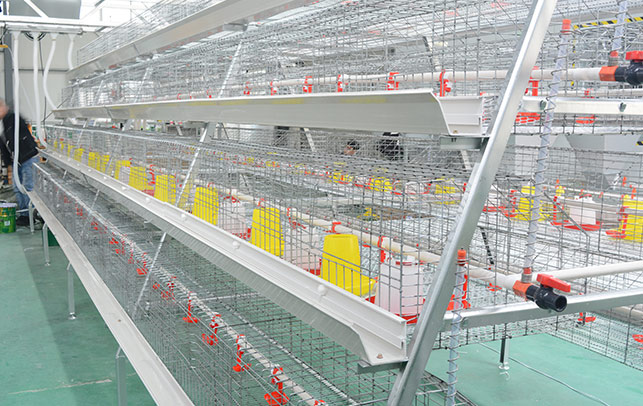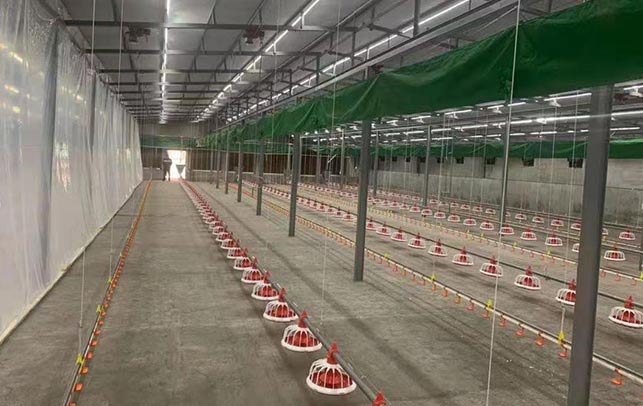What Is To Be Considered In Chicken Layer Cage Design?
Time : 2024-06-19
Layer cages are specially designed for commercial laying hens to maximize their egg production. When RTL chickens are moved from chicken cages to laying hen cages, it is hoped that the hens will be kept in high-quality chicken cages with good ventilation, suitable light and temperature, and a good chicken farm environment will be created. Specifically, layer cage manufacturers tend to focus on two important factors. One is the structure and the other is the material.
Livi Layer cage structure design
When designing a layer cage, cage capacity is the primary consideration for this intensive farming method. Livi optimizes space utilization, leaving enough room for each hen to move around, avoiding crowding and fighting.
Type A Layer Cage Design
96 chickens on 3 floors. 4 doors per floor, 4 chickens per compartment. 48 chickens on one side, 96 chickens on both sides.
120 chickens on 3 floors. 5 doors per floor, 4 chickens per compartment. 60 chickens on one side, 120 chickens on both sides.
120 chickens on 4 floors. 5 doors per floor, 3 chickens per compartment. 60 chickens on one side, 120 chickens on both sides.
128 chickens on 4 floors. 4 doors per floor, 4 chickens per compartment. 64 chickens on one side, 128 chickens on both sides.
4 layers 160 chickens. 5 doors per layer, 4 chickens per compartment. 80 on one side, 160 on both sides.
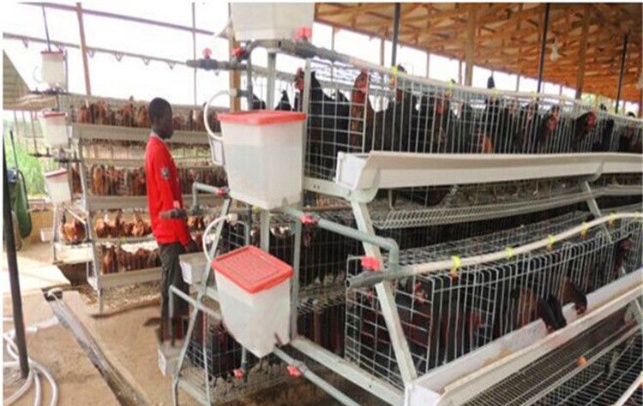
H-type layer cage design
3 layers 120 chickens. 4 doors per layer, 5 chickens per compartment. 60 on one side, 120 on both sides.
3 layers 144 chickens. 4 doors per layer, 6 chickens per compartment. 72 on one side, 144 on both sides.
3 layers 54 chickens. 1 door per layer, 9 chickens per compartment. 27 on one side, 54 on both sides.
4 layers 160 chickens. 4 doors per layer, 5 chickens per compartment. 80 on one side, 160 on both sides.
4 layers 192 chickens. 4 doors per floor, 6 birds per room. 96 birds on one side, 192 birds on both sides.
72 birds on 4 floors. 1 door per floor, 9 birds per room. 39 birds on one side, 72 birds on both sides.
240 birds on 5 floors. 4 doors per floor, 6 birds per nest. 120 birds on one side, 240 birds on both sides.
90 birds on 5 floors. 1 door per floor, 9 birds per nest. 45 birds on one side, 90 birds on both sides.
288 birds on 6 floors. 4 doors per floor, 6 birds per nest. 144 birds on one side, 288 birds on both sides.
108 birds on 6 floors. Each layer has 1 door, each nest has 9 birds. 54 birds on one side, 108 birds on both sides.
8 layers, 144 birds. Each layer has 1 door, each nest has 9 birds. 72 birds on one side, 144 birds on both sides.
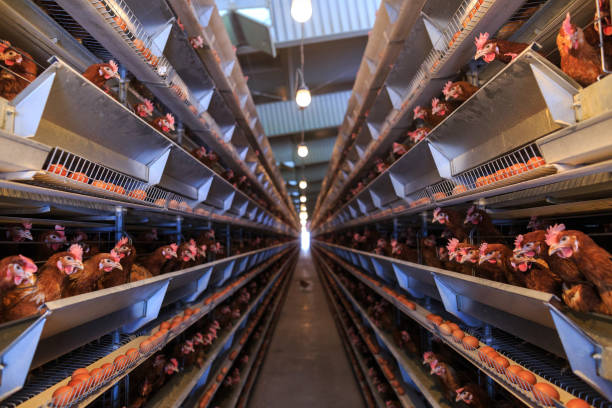
Livi Layer cage material
The characteristics of chicken cages made of different materials will vary greatly. Low-quality materials will immediately endanger the profits of chicken farming. For example, the service life of the chicken cage, the quality of eggs, and the egg breakage rate are all related to the material of the chicken cage.
If the material of the chicken cage is easy to rust, the reason is that the humidity in the chicken house is high, the chicken cage will rust faster and the service life will be shortened. If the chicken cage is rusty, the eggshell will be contaminated with rust, which will harm the quality of the eggs. If the iron wire of the chicken cage is not elastic, it will also increase the egg breakage rate.
Livi uses Q235 bridge steel wire mesh, the surface is hot-dip galvanized or cold-dip galvanized, the material is rust-proof, strong, durable, and has good elasticity.
How to choose a reasonably designed egg layer cage?
From the perspective of the number of chickens raised
Based on our years of experience, we recommend that A-type laying hen cages be used for breeding scales of 1-25,000 chickens. If the number of chickens raised is more than 25,000, H-type laying hen cages are recommended.
From your budget
Livi offers A-type layer cages and H-type layer cages to meet the different needs of chicken farmers. A-type layer cages save costs in terms of related chicken farm equipment. Most of the equipment is not mandatory but optional, such as the automatic belt manure cleaning system can be replaced by a scraper machine, and the egg collector can be replaced by a simple designed collection platform. H-type layer cages can only be equipped with fully automatic systems to allow a large number of chickens to live in a healthy, comfortable and clean environment. Specifically, automatic drinking water system, automatic feeding system, automatic manure cleaning system and egg collection system (recommended).
Related equipment for recommended layer cages
1-5000 chickens. (A-type designed layer cage)
We recommend that farmers only choose A-type layer cages and automatic drinking water systems. If the budget is sufficient, automatic manure cleaning equipment can be added. It is more cost-effective to use manual egg collection.
5000-10000 chickens. (A-type laying hen cage)
It is recommended to use cages with automatic drinking water system, automatic feeding system, automatic manure cleaning system, and climate control system (except open chicken houses).
10,000-25,000 chickens. (A-type laying hen cage)
Due to the large scale of breeding, egg collection is time-consuming and laborious, so it is recommended to install an automatic egg collector on the laying hen cage. Of course, other automated chicken farming equipment is also necessary.
25,000 chickens and above. (H-type laying hen cage)
There is no dispute that farms with more than 25,000 chickens should use H-type laying hen cages, equipped with fully automatic chicken feeding, drinking water, and manure cleaning systems, as well as a climate control system based on poultry exhaust fans and poultry cooling pads.






